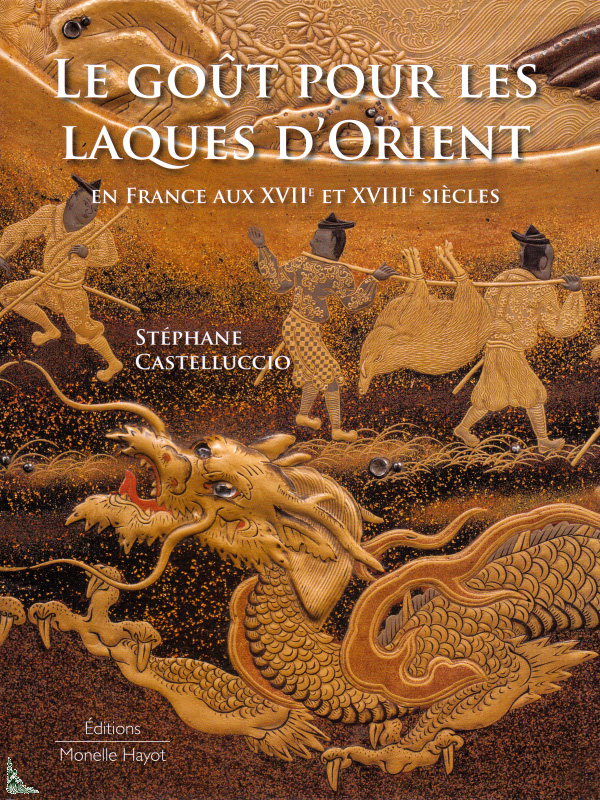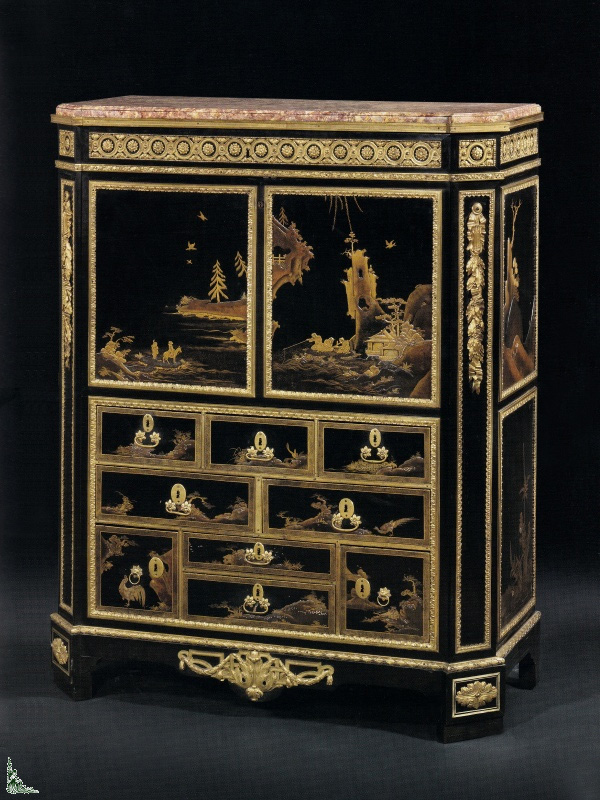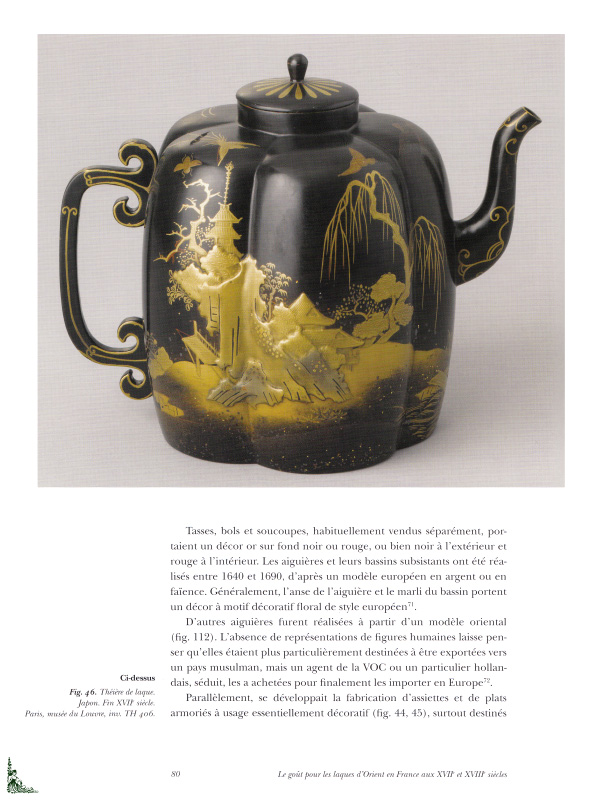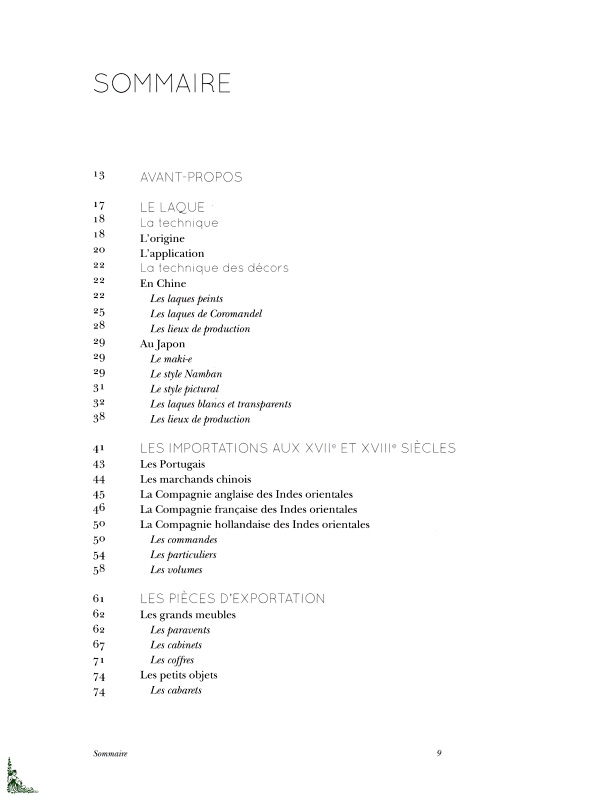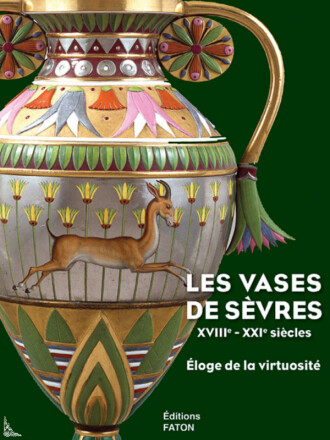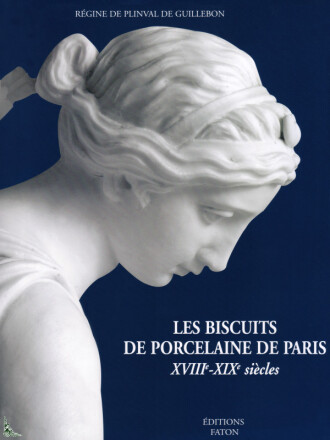The taste for oriental lacquers in France in the 17th and 18th centuries
Book information
| Author : | Stéphane Castelluccio |
| Publisher : | Monelle-Hayot (2019) |
| Binding : | Hardcover w/jacket (292 full color pages) 8 inches x 11 inches |
| Language : | French |
| ISBN : | 979-10-96561-09-4 |
| EAN : | 9791096561094 |
Editorial Reviews
The taste for oriental lacquers in France in the 17th and 18th centuries, by S. Castelluccio, Ed. Monelle-Hayot, 8 inches x 11 inches ( 21 cm x 28 cm ), hardcover book with 292 full color pages
This hardcover book with 292 full color pages well documented and illustrated, retraces the taste for oriental lacquers in France in the 17th and 18th centuries.
In the 17th century, the terms "lachinage" and especially "varnished" meant lacquered objects. The word "lacquer", although known, began to be used in the current sense from the 1720s, developed from the 1740s, particularly in sales catalogs, to supplant that of varnish, which however remained in used until the end of the 18th century. Nowadays, in France, the term lacquer used in the feminine designates the raw material not used, while in the masculine it designates a lacquered object.
This work offers a synthesis of the history of the taste for lacquers in France in modern times, from their import to their use, either practical or as collector's items. This will help to distinguish the convergences and divergences with the porcelain trade, due to the nature of the objects, their technique, their uses... If the apprehension of lacquers was different from that of porcelain, the interest aroused by these objects testified to the fascination of Europe for these productions of fabulous Asia.Archival sources remain rich and varied. Correspondence and trade memoirs, written by and for employees of the French East India Company, make little judgment of aesthetic value to approach lacquers in a practical way with an essentially commercial approach.
These remarks nevertheless provide valuable information for understanding their conceptions of the expectations of the French market. The inventories after death of merchants and individuals, collectors or not, provide a lot of information on the state of the market, but generally without description or value judgment. The latter appear in the relations of travelers in Japan or China, in certain technical treatises, in the memories and newspapers of contemporaries and especially in the sales catalogs published in the second half of the 18th century. Generally, comments on lacquers appear much less abundant than those on porcelains, perhaps because of their relative rarity on the market. This research is not intended to be an exhaustive study of all the collections but seeks to define the broad lines which characterized the market and the taste for lacquers and their evolution over two centuries, in order to follow the evolution of sensitivities towards of these objects that have always fascinated Westerners.
Contents:
- Foreword
- THE LACQUER
- The technique
- The decor technique in China and Japan
- Imports in the 17th and 18th centuries
- Export pieces
- Buy lacquers
- Prices
- The use of lacquers
- At the king
- Collections and collectors
- Marie-Antoinette's collection
- Conclusion
- Annexes
- Bibliography
- Index
The French texts are written by Stéphane Castelluccio.
 Description française
Description française
Le goût pour les laques d'orient en France aux XVIIe et XVIIIe siècles
Détails du livre
| Auteur : | Stéphane Castelluccio |
| Éditeur : | Monelle-Hayot (2019) |
| Reliure : | Relié sous jaquette (292 pages couleurs) 21 cm x 28 cm ( 8 inches x 11 inches ) |
| Langue(s) : | Français |
| ISBN : | 979-10-96561-09-4 |
| EAN : | 9791096561094 |
Description
Le goût pour les laques d'orient en France aux XVIIe et XVIIIe siècles, de S. Castelluccio, Ed. Monelle-Hayot, 21 cm x 28 cm, relié avec 292 pages couleurs
Ce livre de 292 pages couleurs, bien documenté et illustré, retrace goût pour les laques d'orient en France aux XVIIe et XVIIIe siècle.
Au XVIIe siècle, les termes « lachinage » et surtout « verni » désignaient les objets laqués. Le mot « laque », bien que connu, commença à être employé dans l'acception actuelle à partir des années 1720, se développa à partir des années 1740, particulièrement dans les catalogues de vente, pour supplanter celui de verni, lequel resta toutefois en usage jusqu'à la fin du XVIIIe siècle. De nos jours, le terme laque employé au féminin désigne la matière première non mise en oeuvre, tandis qu'au masculin il désigne un objet laqué.
Cet ouvrage offre une synthèse de l'histoire du goût pour les laques en France à l'époque moderne, depuis leur importation jusqu'à leur usage, soit pratique soit comme pièces de collection. Cela permettra de distinguer les convergences et les divergences avec le commerce des porcelaines, dues à la nature des objets, à leur technique, à leurs usages... Si l'appréhension des laques était différente de celle des porcelaines, l'intérêt suscité par ces objets témoignait de la fascination de l'Europe pour ces productions de la fabuleuse Asie. Les sources d'archives demeurent riches et variées. La correspondance et les mémoires de commerce, rédigés par et pour les employés de la Compagnie française des Indes orientales, portent peu de jugement de valeur esthétique pour aborder les laques de manière pratique avec une approche essentiellement commerciale.
Ces remarques apportent néanmoins des renseignements précieux pour connaître leurs conceptions des attentes du marché français. Les inventaires après décès des marchands et des particuliers, collectionneurs ou non, apportent de nombreux renseignements sur l'état du marché, mais généralement sans description ni jugement de valeur. Ces derniers apparaissent dans les relations de voyageurs au Japon ou en Chine, dans certains traités techniques, dans les mémoires et les journaux des contemporains et surtout dans les catalogues de vente publiés dans la seconde moitié du XVIIIe siècle. Généralement, les commentaires sur les laques apparaissent bien moins abondants que ceux sur les porcelaines, peut-être en raison de leur relative rareté sur le marché. Cette recherche ne se veut pas une étude exhaustive de toutes les collections mais cherche à définir les grandes lignes qui caractérisaient le marché et le goût pour les laques et leur évolution sur deux siècles, afin de suivre l'évolution des sensibilités vis-à-vis de ces objets qui ont toujours fasciné les Occidentaux.
Principaux chapitres de l'ouvrage :
- Avant-propos
- LE LAQUE
- La technique
- La technique des décors en Chine et au Japon
- Les importations aux XVIIe et XVIIIe siècles
- Les pièces d'exportation
- Acheter des laques
- Les prix
- De l'usage des laques
- Chez le roi
- Collections et collectionneurs
- La collection de Marie-Antoinette
- Conclusion
- Annexes
- Bibliographie
- Index
Les textes en Français sont de Stéphane Castelluccio.


